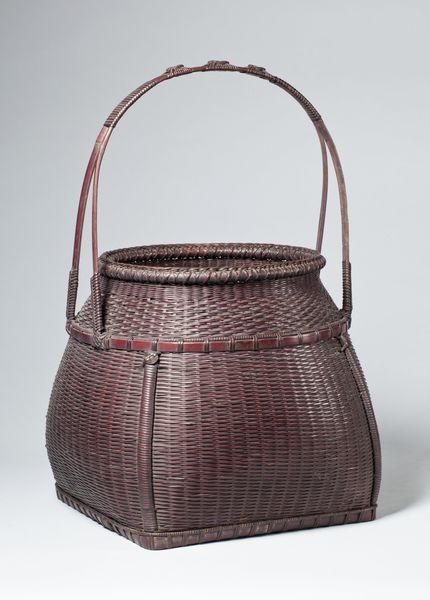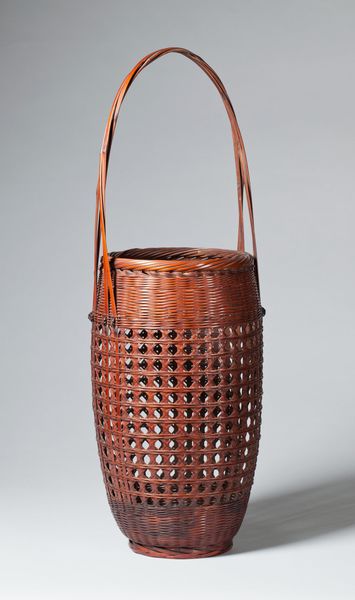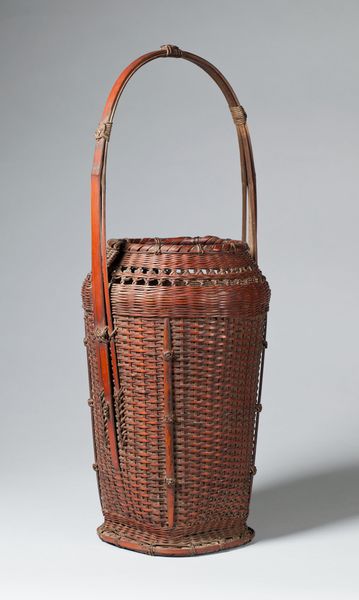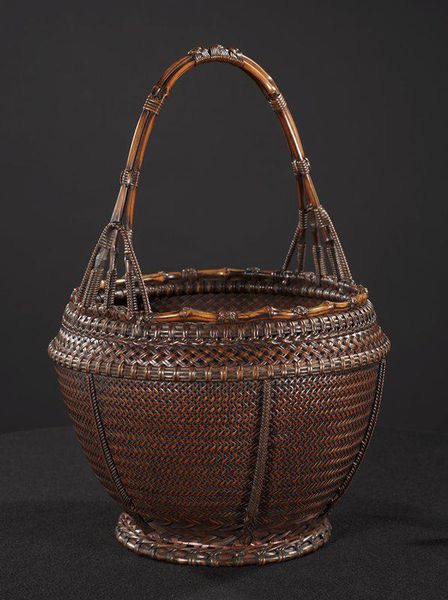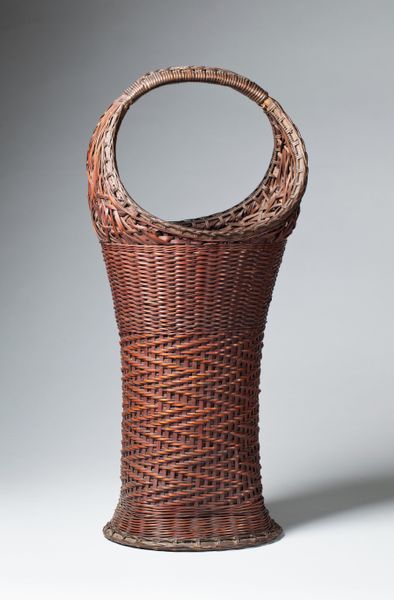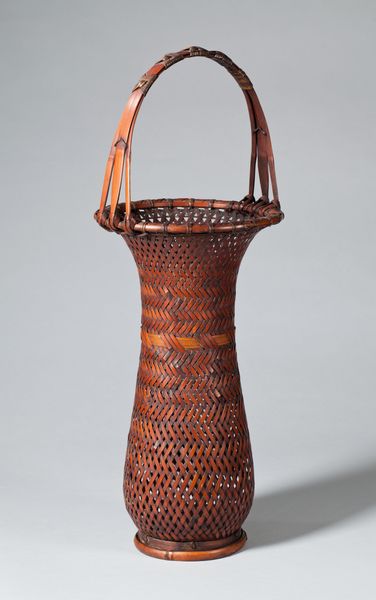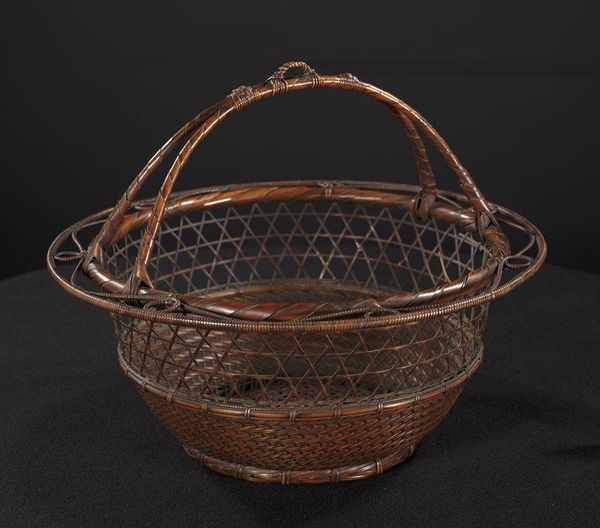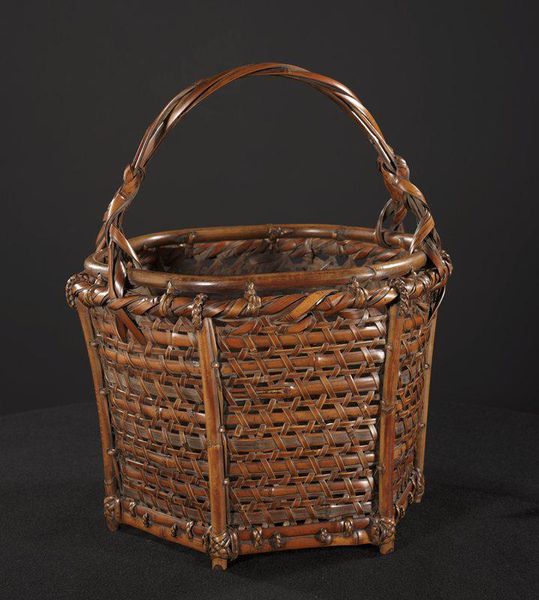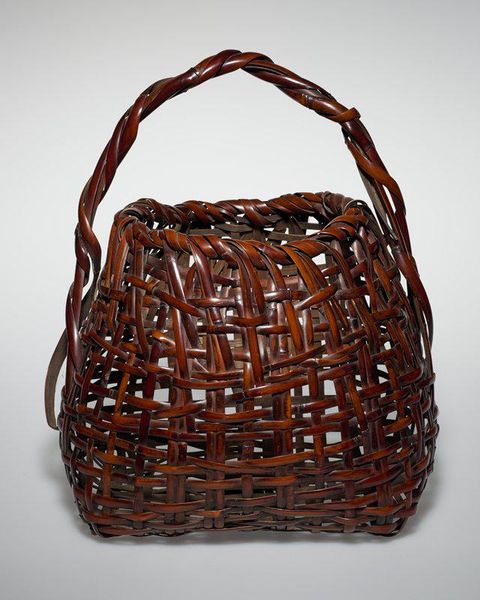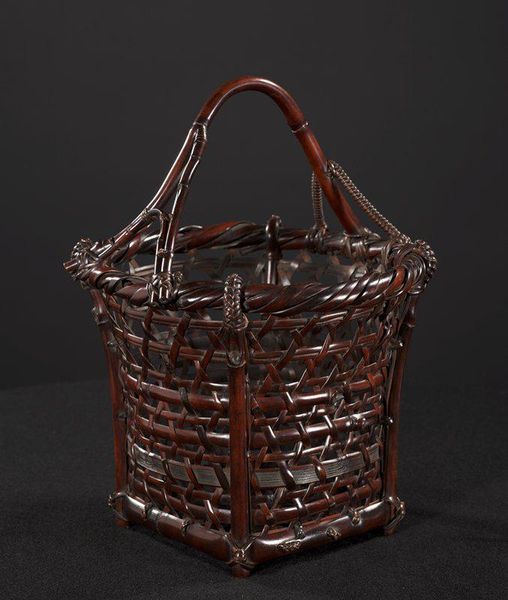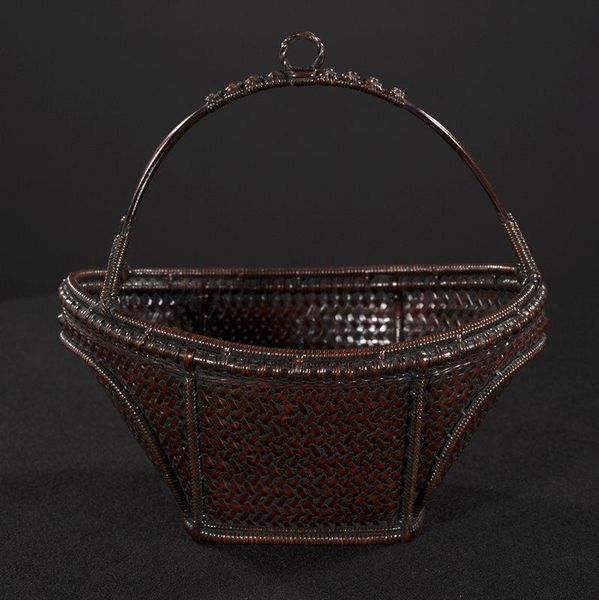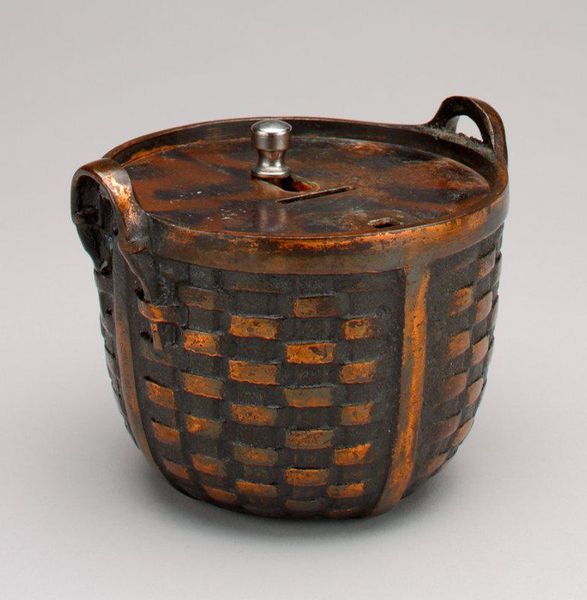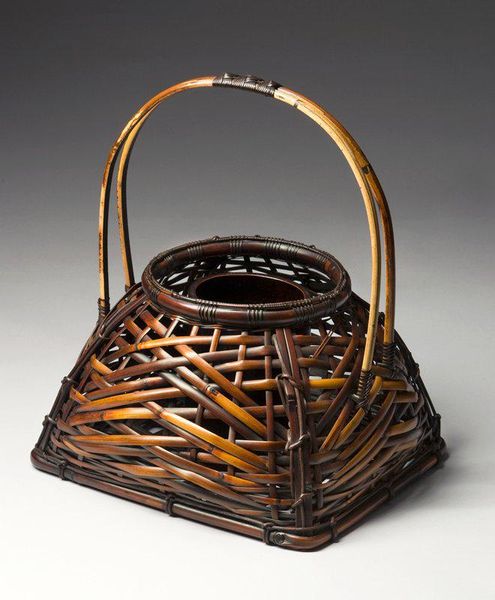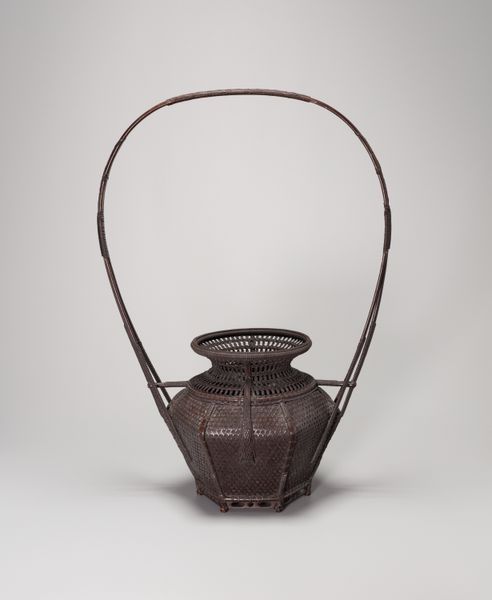
ceramic
#
asian-art
#
ceramic
#
japan
#
stoneware
#
ceramic
Dimensions: 20 3/8 × 10 15/16 × 9 3/4 in. (51.75 × 27.78 × 24.77 cm)
Copyright: Public Domain
Curator: At first glance, this piece emanates such profound craftsmanship—a kind of silent patience, would you agree? Editor: Absolutely. The intricate woven texture pulls me in. It feels both grounded and light, almost yearning upward with that handle. But tell me, what are we actually looking at here? Curator: We're observing a work entitled "Basket" by Gyokukōsai, a Japanese artist from the 19th or early 20th century. It is currently held in the Minneapolis Institute of Art. Constructed with meticulously worked stoneware and ceramic, it represents a significant practice in Asian Art. Editor: Stoneware transformed into something this graceful...amazing! When I consider that it’s made from stoneware I would imagine it’s difficult and fragile, and yet this seems robust, sturdy even. Does the formal arrangement of horizontal and vertical woven elements imply any greater structure? Curator: Structure is its essence! Think of the relationship between inner and outer space—how the object contains yet simultaneously projects a sense of boundlessness. The circular rim evokes notions of wholeness. Gyokukōsai's weaving technique suggests how intertwined individual actions combine to achieve an impressive creation. Editor: It speaks to both utility and the celebration of artistry. It’s almost as if this utilitarian design allows for an appreciation of the minute design variations on the top piece of basketwork! What do you suppose might have been the context in which one would make and utilize this kind of Basket? Curator: Baskets like this often played integral roles in tea ceremonies, ikebana floral arrangements, or as vessels for presenting offerings. Gyokukōsai seems to be communicating profound reverence toward nature—turning humble reeds into transcendent forms! Editor: It's interesting that by restricting the form to a known and ubiquitous thing such as a stoneware basket, a new means to examine the concept and object emerges, prompting more thought and creativity from it’s otherwise simplistic form. Curator: Yes, what may begin as straightforward utility becomes a deeply symbolic act. In appreciating objects like these, we understand ourselves better. Editor: Indeed. We observe an elegant union of material, method, meaning, and individual human expression that ultimately elevates everyday life. Thank you for your insights.
Comments
No comments
Be the first to comment and join the conversation on the ultimate creative platform.
